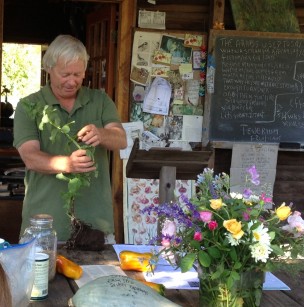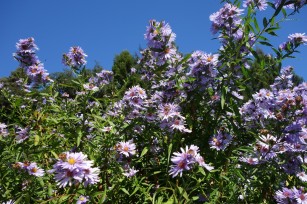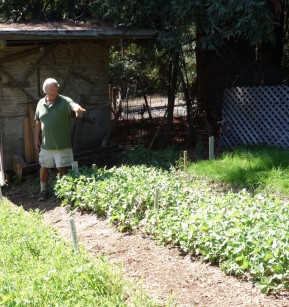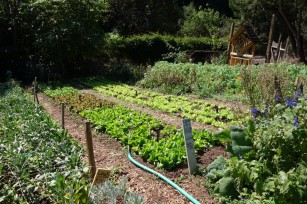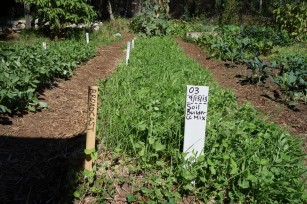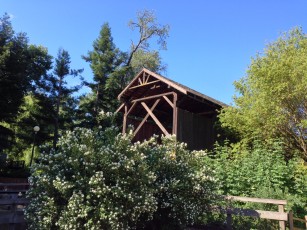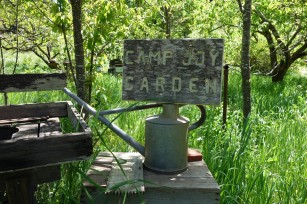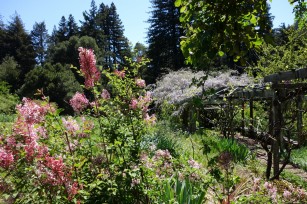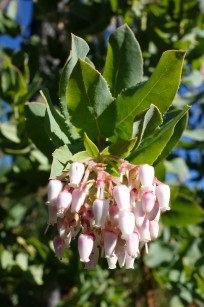 Last fall I wrote about the predictions for winter rains in our area. The Farmer’s Almanac predicted our “winter will be much rainier and cooler than normal”. Weather bloggers online posted an impressive number of charts and figures predicting “a general dry trend”. NOAA said we had an equal chance of precipitation totals going either way.
Last fall I wrote about the predictions for winter rains in our area. The Farmer’s Almanac predicted our “winter will be much rainier and cooler than normal”. Weather bloggers online posted an impressive number of charts and figures predicting “a general dry trend”. NOAA said we had an equal chance of precipitation totals going either way.
Even my favorite predictor, the Sandhill crane, who started it’s annual migration to the San Joaquin Valley several weeks earlier this year, seems to have gotten it wrong. The timing of their migration has been a good predictor of both wet and dry winters. This year the early migration predicted an early winter with plenty of rain and snow.
Every snowboarder, gardener and nature lover knows we are in a great drought that started last winter. Information about the California drought is all over the news. We are sure to get a few storms in the coming months but there will be no “Miracle March” from what I see and hear from the experts at NOAA and NASA. This extreme weather event will bring voluntary or possibly mandatory water rationing. What can we do to make the most of the water allotted to the garden and not let expensive mature landscaping die unnecessarily? How can you make your garden more drought tolerant?
1) Group plants in your garden according to their water needs. Some can survive on rainfall 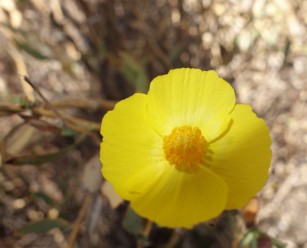 alone after their second or third season while the perennial beds, vegetable garden and fruit trees will require a different schedule. Late winter or early spring is a good time to transplant those plants that use more or less water than their neighbors.
alone after their second or third season while the perennial beds, vegetable garden and fruit trees will require a different schedule. Late winter or early spring is a good time to transplant those plants that use more or less water than their neighbors.
2) Examine your irrigation system and watering plan for efficiency and minimal waste. Watering in the early morning is the most efficient way to maximize absorption whether you water by drip system, sprinkler, soaker hose or by hand. The water soaks deep in the soil without risk of evaporation. It bolsters the plant for the day and has dried from leaves by evening reducing the risk for foliar diseases like mildew. Plant roots are also more receptive to watering in the morning. Water slowly, deeply and infrequently so there is no runoff. This also allows plants to grow deep roots that can go longer between waterings.
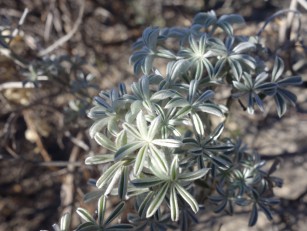 3) Using vegetation or mulches to cover bare soil is a key ingredient to slow down runoff. Maximize what soaks into the ground.? Mulches are a good choice for areas with less than 33% slope, Vegetation works well on areas with less than a 50% slope. Mulch can be organic-such bark chips, straw or grass clippings or inorganic gravel or cobbles. All protect soil from erosion and conserve soil moisture. Organic mulches keep plant roots cool, encourage earthworms and other beneficial organisms and prevent weed growth. Your plan should be to slow, spread and sink water back into the ground whether it be from rainfall or irrigation.
3) Using vegetation or mulches to cover bare soil is a key ingredient to slow down runoff. Maximize what soaks into the ground.? Mulches are a good choice for areas with less than 33% slope, Vegetation works well on areas with less than a 50% slope. Mulch can be organic-such bark chips, straw or grass clippings or inorganic gravel or cobbles. All protect soil from erosion and conserve soil moisture. Organic mulches keep plant roots cool, encourage earthworms and other beneficial organisms and prevent weed growth. Your plan should be to slow, spread and sink water back into the ground whether it be from rainfall or irrigation.
Of all the types of mulches, recent studies have shown that ramial bark chips are one of the best mulches to improve soil health. Ramial chips are those from trees and brush, from branches up to about 4″ in diameter with or without leaves. Deciduous hardwood is best but all chips are good These chips contain a high percentage of thin young bark and young wood. This is what makes them so valuable to the garden. Young wood is the trees factory for producing protein, glucose, fructose, lignin and polysaccharides. It’s an important source of nutrients for living things at all levels according to a study by 2 soil scientists, G.? Lemieux and R.A. Lapointe.? You can obtain these kind of chips free from tree trimming companies like Davey Tree who is probably working nearby chipping roadside brush for PG&E.
Water makes up 90-98% of every plant we grow. It’s needed for photosynthesis, as well as reproduction and defense against pests. Improving your soil’s ability to absorb and hold water should be a priority when you’re out in the garden. Help ensure the health or your trees and garden by following these steps.

